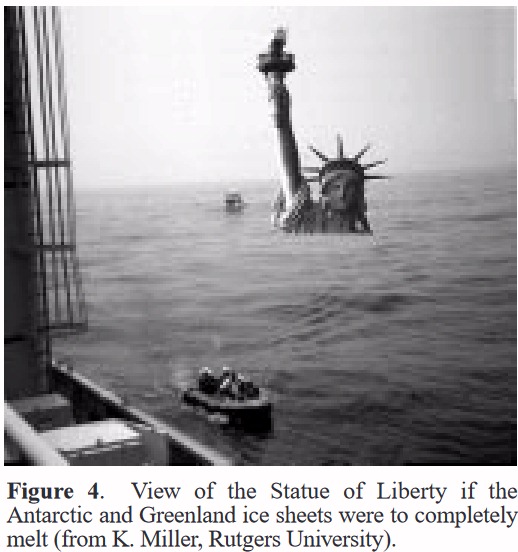LYRICS
Better move over
Getting crowded up here
Late to discover
But it’s coming clearer
Reality sets in
Watchin’ the future dim
Past time to begin
And try again
And try, try, try
Try again
See sea keep rising
Getting deep down there
Shouldn’t be surprising
Yet, caught unaware?
Better move over
Getting crowded up here
Late to discover
But it’s coming clearer
Reality sets in
Watchin’ the future dim
Past time to begin
And try again
And try, try, try
Try again
Can’t understand
What happened to land
We left in the hand…
… the hand of Man
See sea keep rising
Getting deep down there
Shouldn’t be surprising
Yet, caught unaware?
Better move over
Getting crowded up here
Late to discover
But it’s coming clearer
Reality sets in
Watchin’ the future dim
Past time to begin
And try again
And try, try, try
Try again
Chords: Em B7 / C D / D C Em / Em improv.; Part II @ 156 Beats Per Minute
Instrumentation: Vocals (TC-Helicon VOICELIVE and MiniNova Vocorder), Ibanez Acoustic Guitar, Fender Squire Mini Electric Guitar (Boss Digital Delay), Fender Jazz Bass (Boss Digital Delay), Keyboards (Korg PS60, Casio WK-3500, Yamaha PSR-740, MiniNova, MicroKorg)
Human induced climate change is an exponential component of an unordered system (chaos theory). That means global warming is accelerating at a rapid rate in a complex way.
What do we expect to happen?
The Long Run
We expect sea level rise will total about 270 feet over the next several millennia. In 1998, the State of New Jersey published Sea Level Rise in New Jersey with a depiction of the Statue of Liberty with 270 feet in sea level rise.
In the last melting of the glacial maximum, the first 500 years saw a “pulse” of high rate sea level rise of about 500 years duration resulting in about a 66 foot rise in sea levels.
A high rate of sea-level rise starting at ∼14.5 ka BP of ∼500 y duration. The onset occurs at the start of the Bølling−Allerød warm period. Its duration could be <500 y because of uncertainties in chronology, and the globally averaged rise in sea level of ∼20 m occurs at a rate of ∼40 mm⋅y−1 or greater. This pulse, MWP-1A, has been identified separately in the records of Barbados, Sunda , and Tahiti. Spatial variation in its amplitude can be expected because of the planet’s elastic and gravitational response to rapid unloading of ice in either or both of the two hemispheres with, based on the ice−earth models used here, model-predicted values ranging from ∼14 m for Barbados to ∼20 m for Tahiti. This compares with observational values of ∼15–20 m for Barbados and 12–22 m for Tahiti. Observational uncertainties remain large, including differences in the timing of this event as recorded at the different localities, and it is not possible from this evidence to ascertain the relative importance of the contribution of the two hemispheres to MWP-1A.
We expect to see a similar pattern in the long run.
Our estimate of 270 feet is based on “the safe” elevation to live… high-tide, waves, storm surge, grade of shoreline, etc. would make me want my living space to be at least 270 feet above pre-industrial sea levels. Of course, I don’t expect that to happen for millennia… but, I do hope government planners do plan for it now. If you look at Florida as an example, parts of the coastline have seen sea levels rise over 14-20 feet in the last decade… although it was only for hours, you wouldn’t want to live there during those hours. Not to mention, the frequency of these extreme weather events will rise exponentially. (Thus, our recommendation to evacuate Florida now i.e. Managed Retreat.) The billions of dollars spent to rebuild after Ida will all be for naught. Allowing building there will needlessly endanger property and lives. Parts of the world have already seen storm surges of 40 feet. I expect most North American coastlines will see sea levels rise, if only temporarily, by 20-40 feet this century. As far as long run sea level rise, much will depend on location, gravity, isostatic adjustment, and thermal expansion. If the ocean temperatures get warm enough (thermal expansion), parts of the world may see sea levels rise to 270 feet for long periods of times. Other parts of the world, like Greenland, may actually see sea levels decline. In any event, the Earth crossed tipping points this decade which make extreme sea level rise inevitable and irreversible in our lifetimes. Planners should plan on it.
Sidd reiterated, “That 270 feet will take a long time. I would be more careful about the violent rain than the ice melt.”
— from Sea Level Rise: Then and Now / Mukherjee and Brouse (2023)
What Can I Do?
There are plenty of things you can do to help save the planet. Stop using fossil fuels. Consume less. Love more. Here is a list of additional actions you can take.
